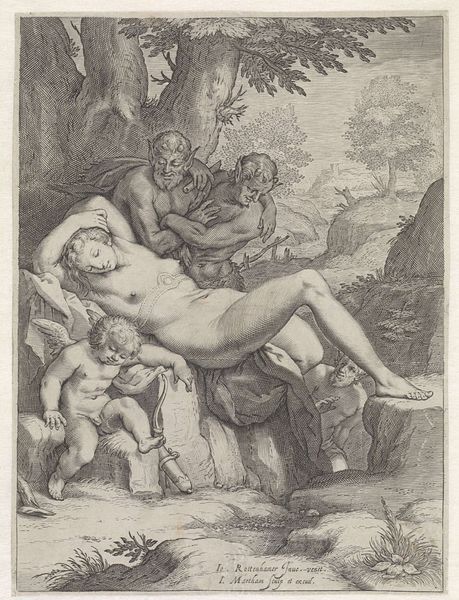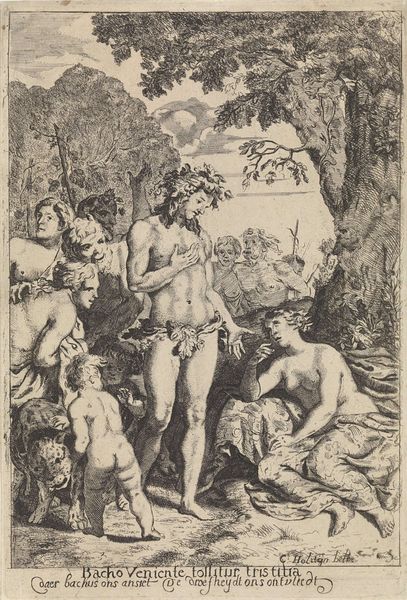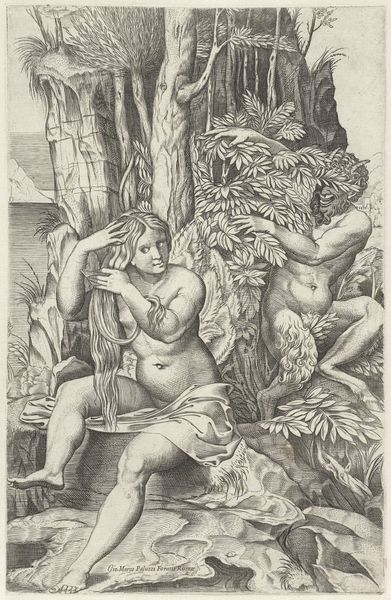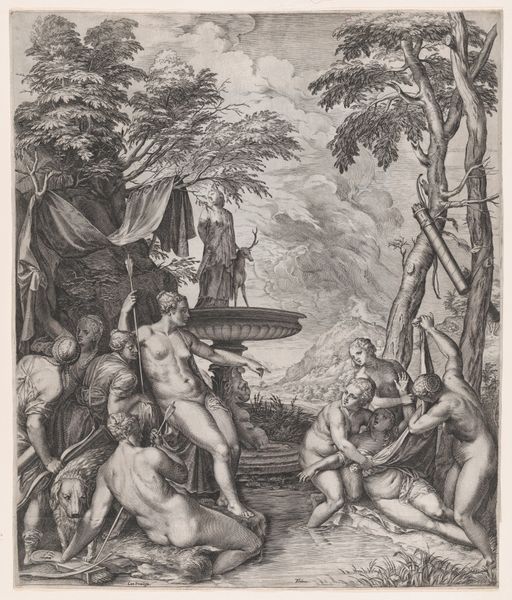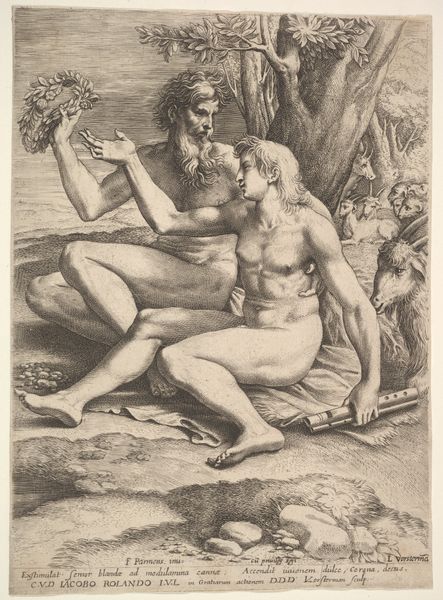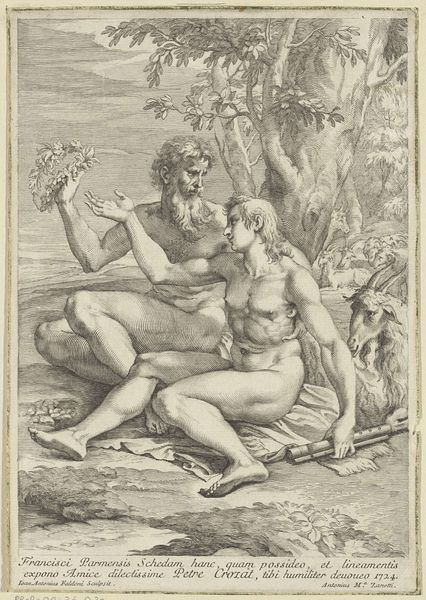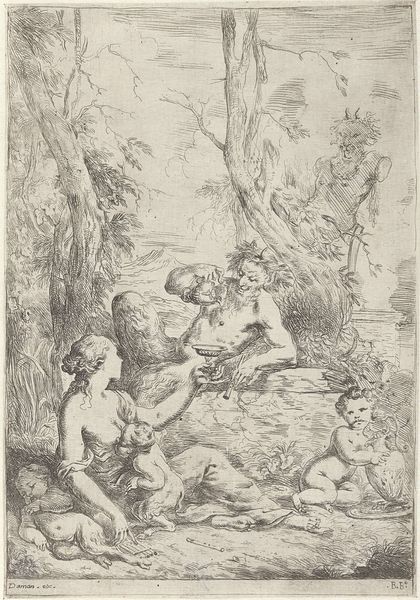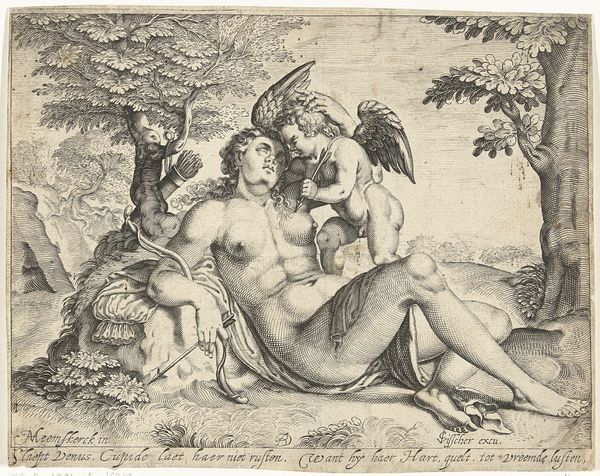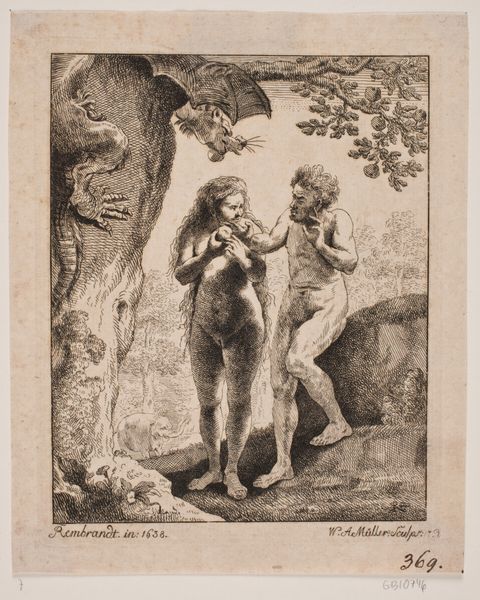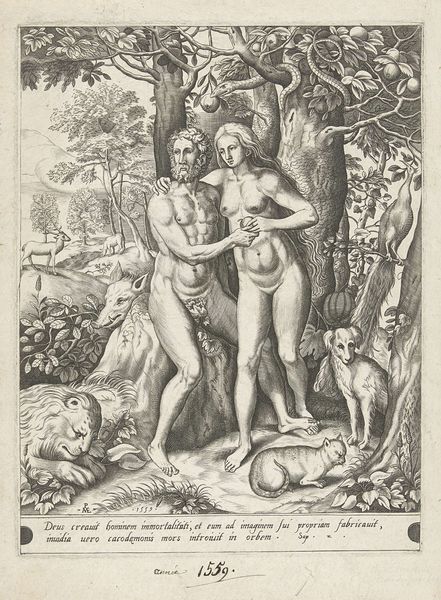
Dimensions: height 195 mm, width 154 mm
Copyright: Rijks Museum: Open Domain
Editor: This engraving, "Venus, Amor en Sater," was created by Agostino Carracci sometime between 1567 and 1602. The print depicts Venus lounging while Cupid embraces her, but there's also a satyr lurking behind a tree, spying on them. I find it a bit unsettling. What stands out to you? Curator: The presence of the satyr, subtly peeking, speaks volumes. He represents untamed desire, the id, if you will, constantly observing and ready to disrupt idealized love. Do you see how Venus gestures towards her heart? It's a visual language, common in art. Editor: I do now! She’s both acknowledging love and protecting herself from… intrusion? Curator: Precisely. This isn’t just a scene of beauty; it's an allegory. The figures operate symbolically, a kind of morality play, of earthly versus spiritual love. Cupid represents pure affection. And the satyr is base instinct, and Venus is caught between them. Consider the artistic style of the Italian Renaissance—didactic storytelling using classical figures was prevalent, wasn't it? Editor: Definitely! I hadn't considered the moralizing aspect. So, by including the Satyr, Carracci adds depth, almost a warning about the complexities of love. Curator: Exactly. Even seemingly simple images hold complex narratives when we begin to unravel the symbolism embedded within. These images served as cultural touchstones, instantly recognizable and resonant for viewers of the time. Editor: That makes so much sense! I'll never look at Renaissance art the same way again. Thank you! Curator: My pleasure. It's the enduring power of symbols to keep culture alive, generation after generation.
Comments
No comments
Be the first to comment and join the conversation on the ultimate creative platform.
